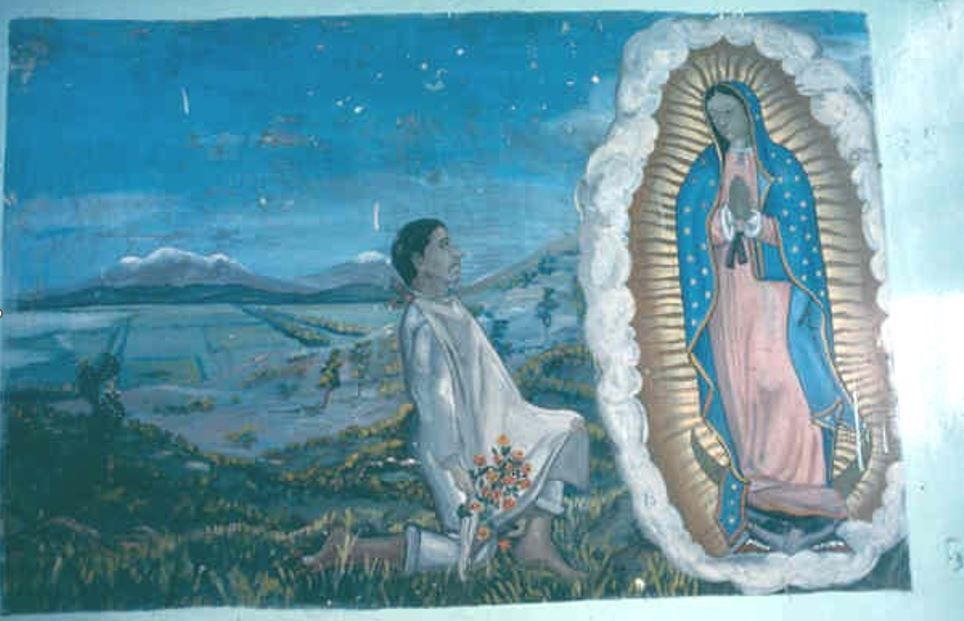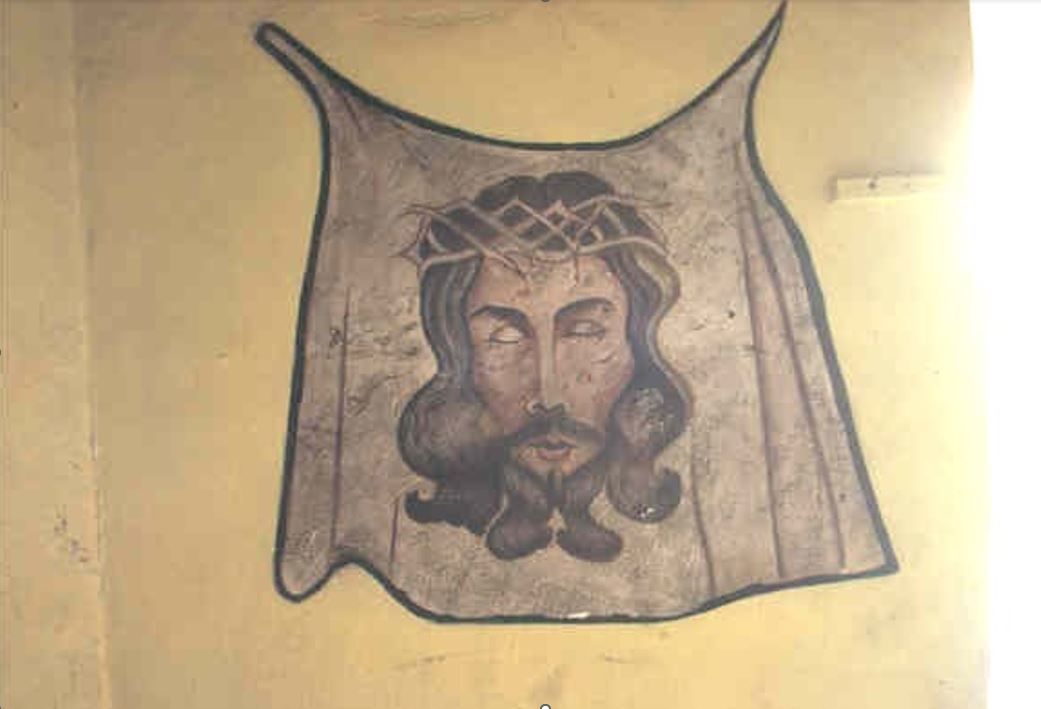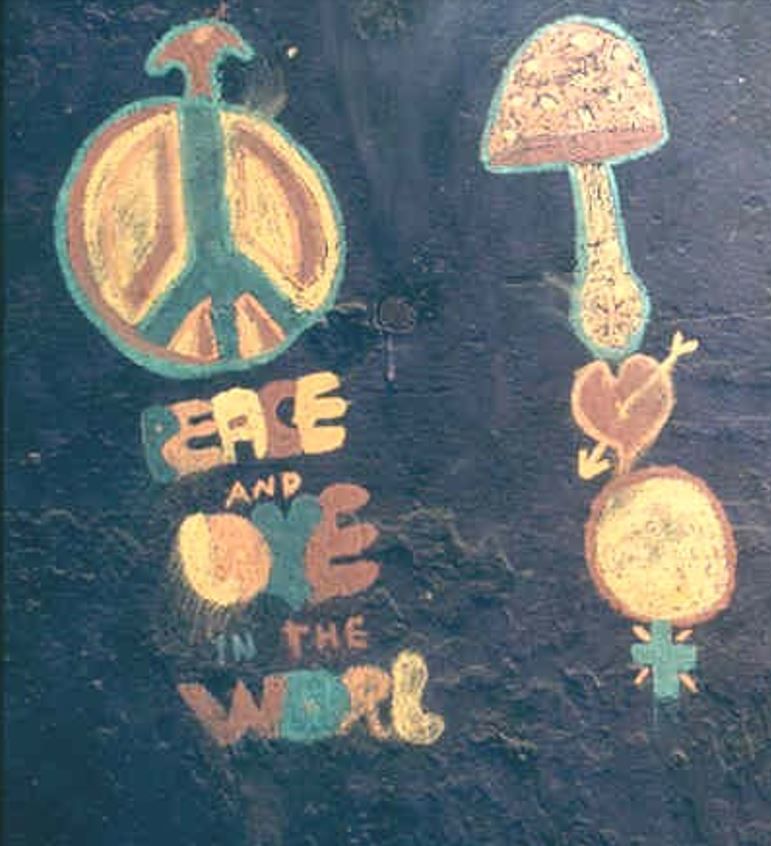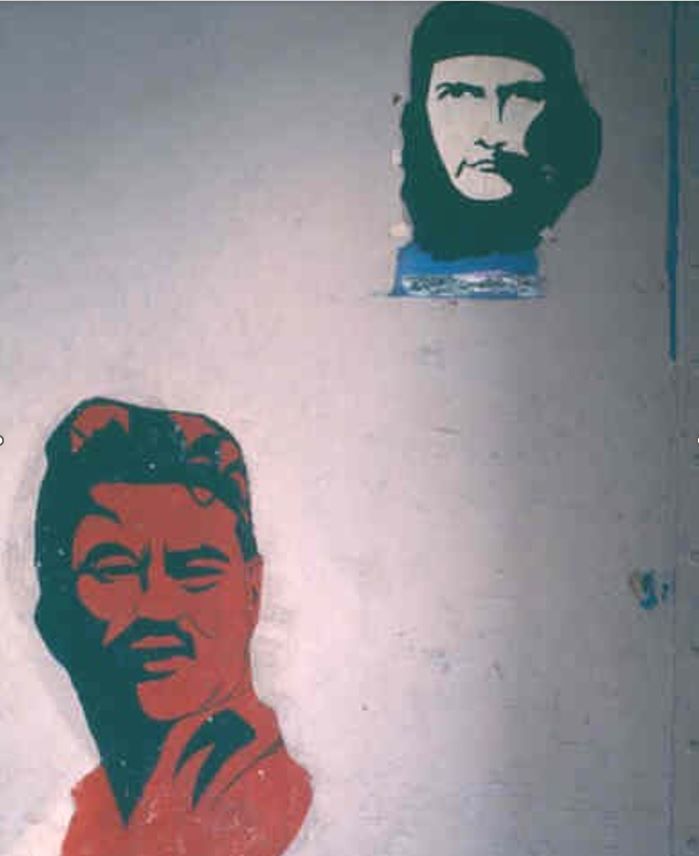Lecumberri Graffiti: testimonies of symbolic prison universe
Arturo Córdova Tovar's photographs captured anonymous accounts of mental prisons with walls as the only support. Learn about these pictures that were saved during one of the last tours of Lecumberri before it became the General Archive of the Nation.

When the Preventive Prison of the Federal District (Lecumberri) closed in August 1976, there was no one inside. The building's shell remained as a reminder of what it was, and the drawings that former prisoners had painted on the walls of their cells were a sign of an idea, a thought, an emotion, or a world of feelings.
Some of the messages written by the prisoners were able to be saved in time because of the work of a photographer named Arturo Córdova Tovar. In 1979, he went to the old black palace to take pictures of the last visual evidence before work began to turn it into the new home of the General Archive of the Nation.
Arturo Córdova's photos show parts of what used to be the panopticon system and the old places where thousands of prisoners did their time. Arturo found a lot of messages and drawings that the former prisoners of Lecumberri had left behind as a way to make the prison their own.
Like the personal, crude, funny, satirical, and even political writings that cover the walls of cities all over the world, these stories of life in prison could be thought of as graffiti. Some of the drawings on the walls of the now-defunct preventive prison were about the person who made them, while others were for the prisoners who would come after them. The people who made the drawings may not have thought that someone else could see them.
Thanks to Córdova's work and the fact that the negatives and photographs are kept at the General Archive of the Nation in a collection with more than two hundred color slides that bear the author's name, it is now possible to learn about them. This lets us hear that message in a new way and give it a reading that starts from different perspectives and levels of interpretation in a subway sphere of communication in the prison and ends with the young Arturo Cordova.
Ricardo Elizondo's book Lecumberri, Angel, and Scorpion: A Photographic Gallery of the Last Day (2000), which is based on the comics in question, asks us to think about how to read these pictures by asking us two important questions: what do we see now, and what do Córdova's pictures show us? Well, we have to look past the lines, silhouettes, stains, faces, compositions, caricatures, collages of illustrations, nudity, and legends, among other things, to find an invisible world of ideas built from the language of graffiti.
Fernando Figueroa Saavedra has said that the history of graffiti language has been marked by its marginalization, vulgarization, and dissidence, which has led to it being ignored and forgotten. This feeling of being left out is clear in the old graffiti of Lecumberri, which shows this on different levels. First, the authorities didn't care about the people who made the graffiti, even if they were political prisoners.
Second, they were destroyed when the walls of the preventive prison were remodeled and cleaned. Third, they were forgotten for at least 20 years until they were used as a source of study, like Ricardo Elizondo, who didn't hold back from saying how uncomfortable he was with the language, which influenced his choice of what to study. In the words of the writer who had access to Arturo's collection:
For this selection of photos (...) we let ourselves be impressed by the dualities, the contrasts, the cries of affection, the hatred, the throbbing of loneliness; we shunned gratuitous pornography -which to tell the truth there is almost none-, the gross vulgarity that in this case did little to help, and the images that because of their interpretative density could easily trigger attention and disperse.
When you look closely at the 248 slides, you can put together a huge number of stories that can be told both in written and graphic form. Some themes can be seen in this graffiti, which was made by people who were outside of society and were punished by being locked up and not being able to come back.
The main topics are freedom, Manichaeism, religion, pornography, drugs, and political disagreement. This is just a broad outline because each of these graffiti will always be read in a way that is subjective and only shows part of the truth. This is because there is no producer, clear date of when it was made, or even the cell number that the graffiti belonged to. This makes it hard to find the graffiti's possible creator and first interpreters.
Arturo Córdova had to deal with these problems of interpretation when he wrote captions for each of the photographs. Some of the captions matched what was seen, but others did not. This lets us read an extra meaning and see how Arturo created meaning when he gave each piece a name for his collection. By giving each piece a name, Arturo made a new document that came out of anonymity and had a new producer.
There are also figures and symbols in this graffiti that are easy to recognize because they have been a part of the religious worldview for many generations. In her Guadalupan prayer in front of her native messenger, there were faces of the Virgin Mary and a hint at the sacred mantle. On the other hand, some pictures remind us of how the devil looks when he has horns.


![Arturo Córdova Tovar, La graciosa huida [Detail], 1979.](https://www.mexicanist.com/content/images/2022/11/Arturo-C-rdova-Tovar-La-graciosa-huida-Detail-1979.jpg)
In this old graffiti, there was also a picture of a mushroom, which Ricardo Elizondo saw as a sign of freedom because it reminded him of a drug that made prisoners lose touch with reality for a short time. It's important to remember that one of the problems that the Lecumberri prison had to deal with was the sale and use of drugs. This was caused by the corrupt system that ruled that world.
But our understanding of the graphic expression can get more complicated because we don't know exactly when each piece of graffiti was made, as we've already said, and we're looking at it through the eyes of a photographer.
In this case, graffiti gives us more clues about what it means. We can connect it not only to escaping reality but also to the habitual use of drugs by an entire generation from the mid-1960s until the end of their time in prison. Many young hippies, both from Japan and other countries, were persecuted, ostracized, criminalized, and even put in jail if they linked counterculture rebellion with politics.
In the affirmation of values like pacifism, ritual consumption was driven by a desire to connect with a bigger reality. This link between mushrooms and peace is shown in a part of the picture where a mushroom grows from a peace sign and the words "peace and love in the world" are written. It looks like the picture made the young Arturo feel something. He must have lived through those years of cultural discord to name the picture "Those years 69." So, it's not surprising that the pictures also show rock 'n' roll and the hippy movement, which are also part of the counterculture.

In addition to these images, the prison also had pictures of political and revolutionary movements carved into its walls. The political prisoners who lived in the penitentiary at different times, but especially in the 1960s and 1970s, painted their ideas about the world on the walls as a way to protest being locked up because they didn't agree with the social and political order. So, it's not surprising to see revolutionary faces like Ernesto Che Guevara and Genaro Vázquez in graffiti, or the hammer and sickle, a symbol of the oppressed classes (peasants and workers) that is often used in communist political expressions.

Without a doubt, the collection of photographs by Arturo Córdova Tovar. The last day at the Lecumberri Palace gives us a chance to learn about the last days of the old Penitentiary before it was remodeled to become the headquarters of the General Archive of the Nation. It also gives us a glimpse into some of the ideas that were floating around among the Lecumberri prisoners. Can you imagine how many worlds and meanings each of Arturo's pictures freezes in time? Dare to look through his collection and find the amazing things it holds.




